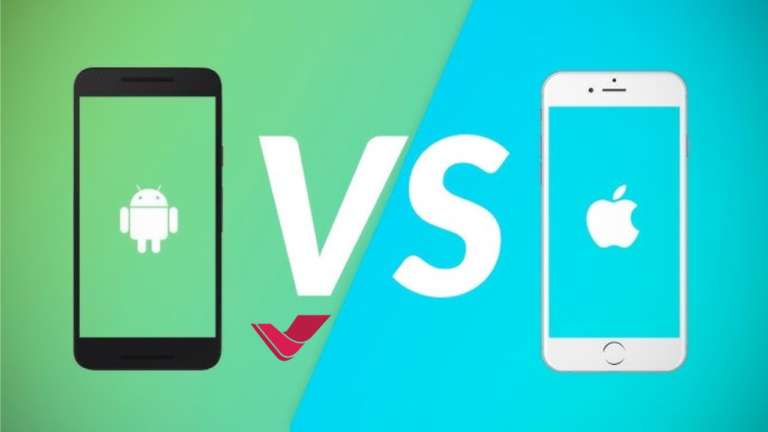The age-old debate between iPhone and Android enthusiasts is endless. With each camp holding its ground firmly, it’s crucial to investigate an in-depth comparison to understand the nuances that set these tech giants apart. This article explores various facets of the iPhone and Android ecosystems, shedding light on their strengths and weaknesses.
Design and Build Quality
iPhone’s Approach to Design
Apple’s iPhone is renowned for its sleek design and premium build quality. Every iPhone model released shows the company’s meticulous attention to detail. Apple opts for a consistent design language, ensuring that even older models retain a sense of modernity and elegance. High-quality materials, such as aerospace-grade aluminum, stainless steel, and robust glass, lend the iPhone a luxurious feel that is hard to match.
Android’s Diverse Design Spectrum
In contrast, Android smartphones offer many design choices, catering to a wide range of preferences and budgets. Android provides diverse options, from high-end models that rival the iPhone in terms of build quality and aesthetics to budget-friendly options that prioritize functionality over form. Brands like Samsung, Google, and OnePlus, among others, have their unique design philosophies, ensuring that there’s something for everyone in the Android ecosystem.
Operating System and User Experience
iOS: Seamless and Intuitive
Apple’s iOS is celebrated for its simplicity and intuitive user interface. The seamless integration between hardware and software results in a smooth and consistent user experience across all Apple devices. iOS is known for its regular updates, which are available to all supported devices simultaneously, ensuring users can access the latest features and security enhancements.
Android: Customizable and Versatile
Android’s open-source nature allows for a high degree of customization and flexibility. Users can tailor their devices to suit their preferences, from custom launchers to intricate themes. However, this freedom comes with a trade-off in terms of consistency. The Android experience can vary significantly across different devices and manufacturers due to the custom skins and modifications each brand applies. Furthermore, the update process can be inconsistent, with the timing and availability of updates varying by manufacturer and device.
App Ecosystem and Availability
The App Store: A Curated Experience
Apple’s App Store is known for its strict app review process, ensuring that the apps available are of high quality and adhere to a set of guidelines. This curated approach has its advantages, as it reduces the likelihood of encountering malicious apps. However, it also means that the App Store may have fewer apps than its Android counterpart, as the barrier to entry is higher for developers.
Google Play Store: Vast and Diverse
The Google Play Store boasts a more extensive selection of apps thanks to a more lenient review process. This vastness ensures that users have various apps catering to multiple needs and interests. However, this diversity also means that users must be more vigilant about the apps they download, as the likelihood of stumbling upon low-quality or malicious apps is higher than in the App Store.
Hardware Innovation and Choice
iPhone: Unified Hardware Vision
Apple’s control over its devices’ hardware and software allows for a unified and optimized experience. The iPhone’s hardware is designed to work seamlessly with iOS, resulting in impressive performance and efficiency. Apple’s A-series chips are a testament to this, consistently setting benchmarks for mobile performance.
Android: A Spectrum of Hardware Options
The Android ecosystem offers a wide range of hardware options, from flagship devices with cutting-edge technology to budget-friendly smartphones that provide essential features without breaking the bank. This diversity means users can choose a device that meets their needs and budget. High-end Android smartphones often feature the latest innovations in mobile technology, sometimes outpacing the iPhone in certain aspects, such as display technology, battery life, and camera capabilities.
Security and Privacy
iOS: A Fortress of Privacy
Apple has positioned itself as a staunch advocate of user privacy, with iOS featuring a range of privacy-centric features. The company’s approach to data minimization, end-to-end encryption, and strict app permissions contribute to a secure environment for iPhone users. iOS updates are promptly rolled out to all users, addressing security vulnerabilities and ensuring that devices remain protected against emerging threats.
Android: Strides in Security
While Android’s open-source nature presents unique security challenges, Google has made significant strides in enhancing the platform’s security. Features like Google Play Protect work behind the scenes to scan apps for malicious behavior, and regular security updates are provided to supported devices. However, the fragmentation in the Android market can lead to delays in security updates for some devices, depending on the manufacturer.
Conclusion
Choosing between an iPhone and Android device ultimately boils down to personal preference and priorities. If you value a seamless, intuitive user experience, consistent updates, and prioritize privacy and security, the iPhone may be your ideal choice. On the other hand, an Android device better suits your needs if you prefer customization, a wide array of hardware options, and a mtensivesuits selection. Both platforms have their merits and drawbacks, and the decision should be based on which ecosystem aligns best with your individual preferences and lifestyle.
Read More: Unveiling Tech Marvels with TrendzGuruji.me: Your Ultimate Computer Guide.


